In the vast and varied world of avian adaptations, few are as peculiar and fascinating as the molting strategy of the Common Murre (Uria aalge). While most birds replace their feathers gradually over weeks or months, this remarkable seabird takes a dramatically different approach – it simultaneously sheds all its flight feathers, rendering itself temporarily flightless, essentially “dropping weight” mid-life cycle to improve its survival odds. This extraordinary adaptation represents one of nature’s most intriguing compromises between competing survival needs. Through this article, we’ll explore the biology, ecological context, and evolutionary significance of this unusual molting strategy that has allowed the Common Murre to thrive in challenging marine environments.
The Common Murre: A Remarkable Seabird
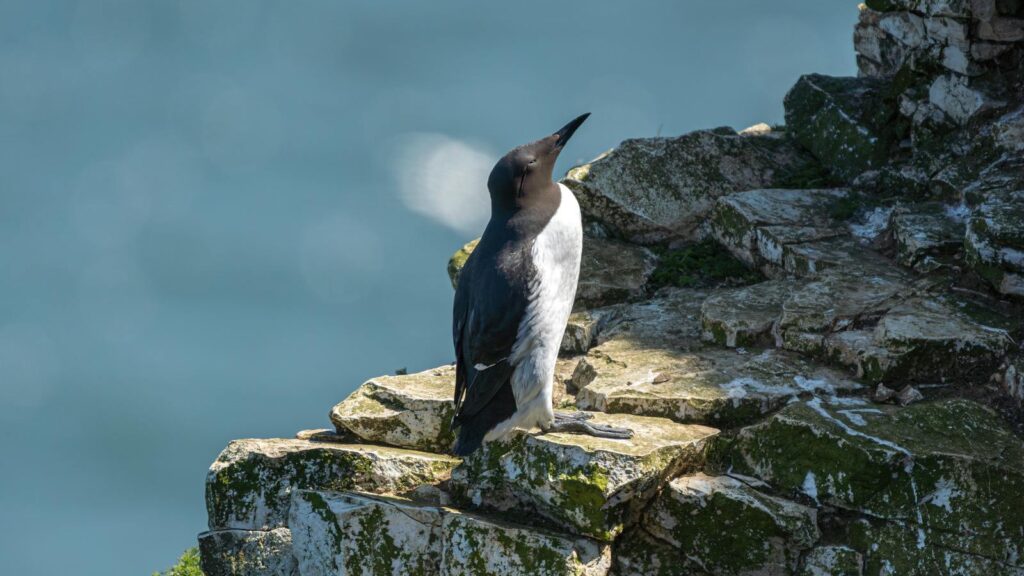
The Common Murre, also known as the Common Guillemot in some regions, is a distinctive black and white seabird belonging to the auk family (Alcidae). These remarkable birds are built for a dual-purpose lifestyle, spending most of their time at sea but returning to precipitous coastal cliffs to breed. With their upright posture on land and exceptional diving abilities in water, Common Murres can plunge to depths exceeding 180 meters (590 feet) in pursuit of fish. Their wings are relatively short and narrow compared to many birds, representing an evolutionary compromise that allows them to “fly” underwater with remarkable agility. These adaptations have made them successful residents of cooler northern waters in both the Atlantic and Pacific Oceans, where millions gather in spectacular breeding colonies.
The Unusual Molting Strategy: Simultaneous Wing Molt
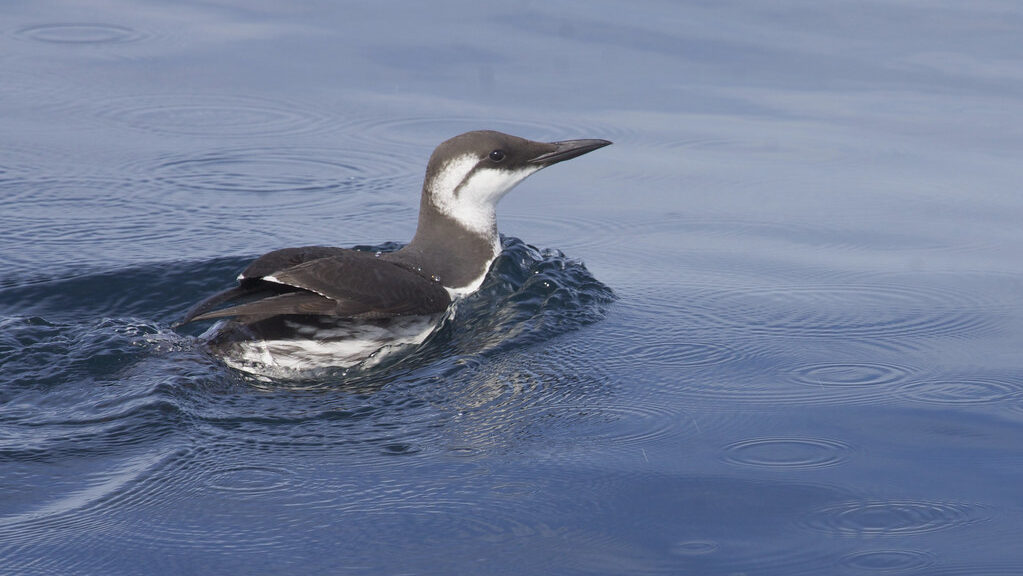
Unlike most birds that replace their flight feathers gradually to maintain airworthiness, Common Murres employ a strategy called “simultaneous wing molt” – they drop all their primary and secondary flight feathers at once. This radical approach renders them completely flightless for a period of approximately 45-70 days while new feathers grow in. During this vulnerable phase, the birds must remain at sea, swimming rather than flying to escape predators or find food. The biological cost is significant: they temporarily sacrifice their aerial mobility and must expend considerable energy growing an entirely new set of flight feathers in a compressed timeframe. This strategy represents one of the most extreme molting approaches in the avian world, matched by only a few other waterbird species like loons, grebes, and waterfowl.
The Weight-Loss Connection: A Matter of Survival
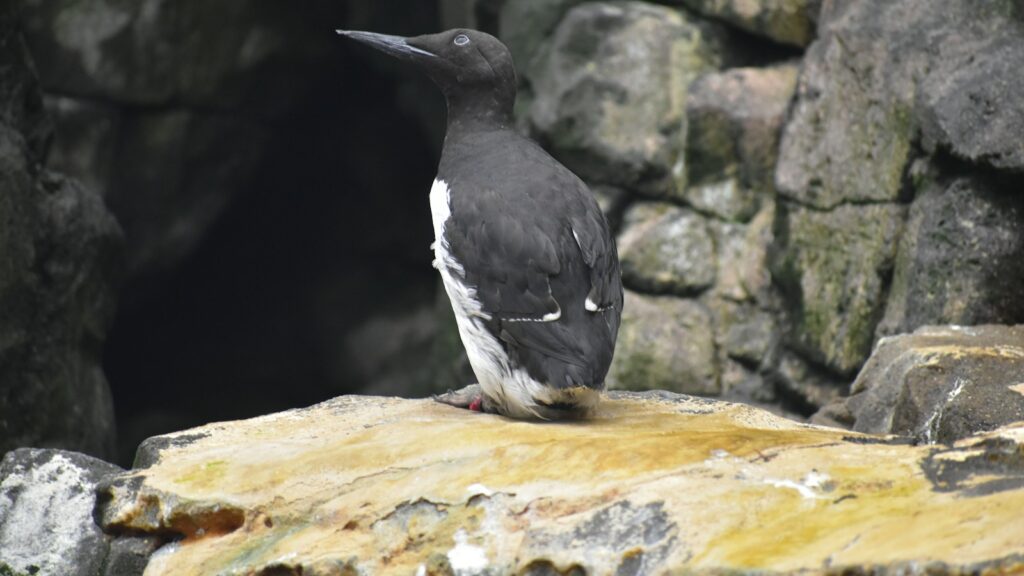
The concept of “dropping feathers to lose weight” is both literal and metaphorical in the Common Murre’s case. By shedding all flight feathers simultaneously, the bird temporarily reduces its body mass by a small but significant percentage – typically around 7-10% of total weight. This weight reduction serves a crucial purpose during the flightless period, improving the bird’s buoyancy and reducing energy expenditure while swimming. Research has shown that Murres actively manage their body composition during this vulnerable period, often deliberately reducing their overall body mass through decreased food intake while maintaining essential muscle tissue. This carefully orchestrated physiological balance allows them to optimize their swimming efficiency during a time when flight is impossible, essentially trading one form of mobility for another.
Ecological Timing: When to Become Flightless
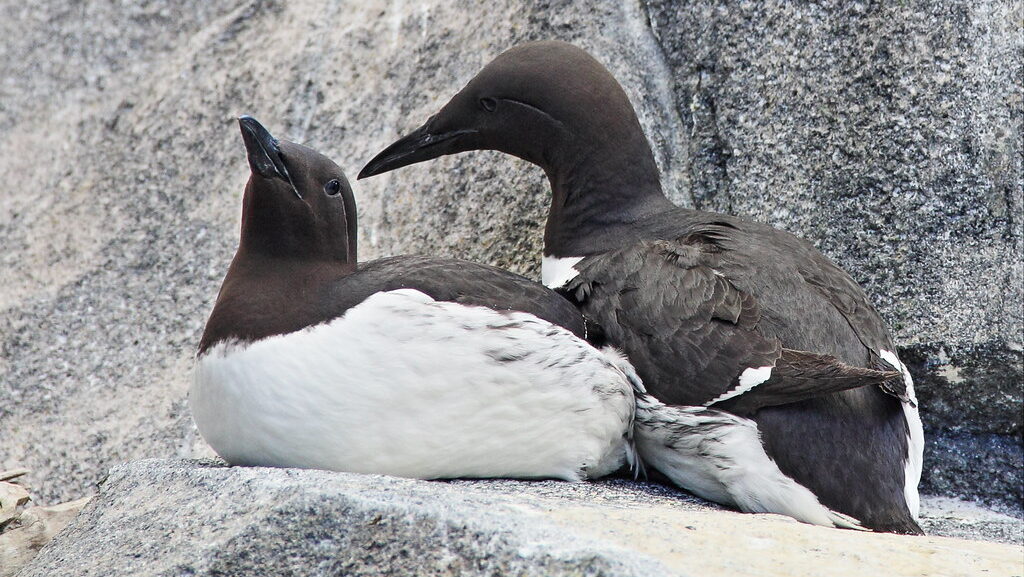
The timing of the Common Murre’s simultaneous molt is critically important to its survival. These birds typically undergo their flightless period in late summer and early autumn, after the breeding season has concluded and when ocean productivity remains high enough to sustain them. This strategic timing allows adult birds to complete their energetically demanding breeding duties before tackling the equally challenging molt period. Researchers have documented how Murre populations across different regions synchronize their molt periods to align with local oceanographic conditions that offer optimal food availability. Some populations will actually undertake significant swimming migrations to reach areas with abundant food resources before beginning their molt. This remarkable temporal coordination demonstrates the sophisticated evolutionary adaptations these birds have developed to manage their annual life cycle challenges.
The Evolutionary Puzzle: Why Molt All at Once?
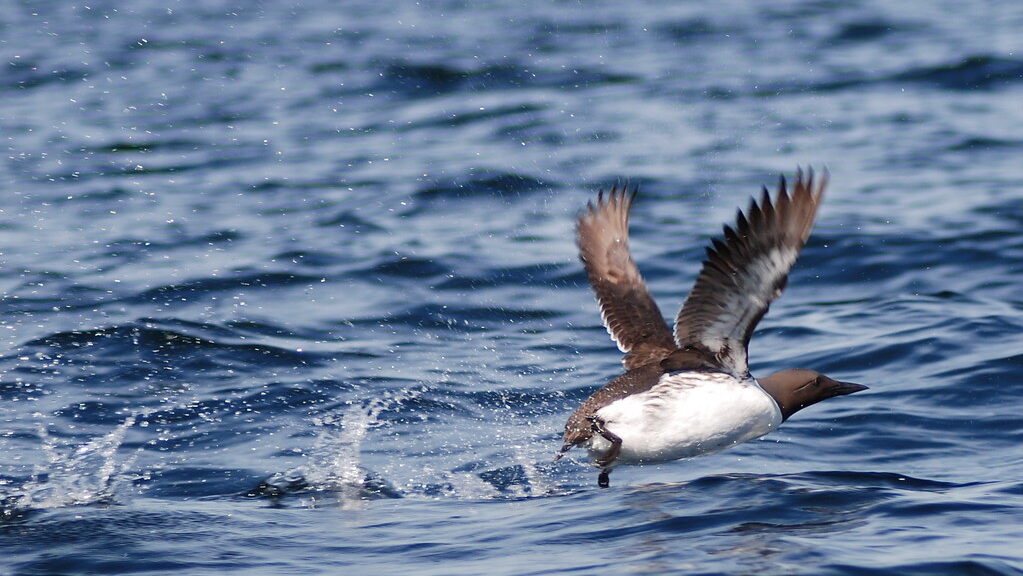
The evolution of simultaneous wing molt in Common Murres presents a fascinating evolutionary puzzle that scientists continue to study. This strategy likely emerged as a response to the competing demands of their dual-lifestyle as flying and diving birds. The Murre’s wings represent a compromise – short enough to function effectively underwater but just large enough to sustain flight in air, albeit with high energy costs. Maintaining this delicate balance while replacing feathers gradually would potentially compromise both flying and diving abilities for an extended period. By concentrating the molt into a shorter, intense period, Murres minimize the total time they must operate with compromised abilities. Evolutionary biologists point to this adaptation as a classic example of natural selection finding an unexpected solution to competing survival pressures, accepting a short period of extreme vulnerability in exchange for optimal performance during the remainder of the year.
The Physics of Flight vs. Swimming
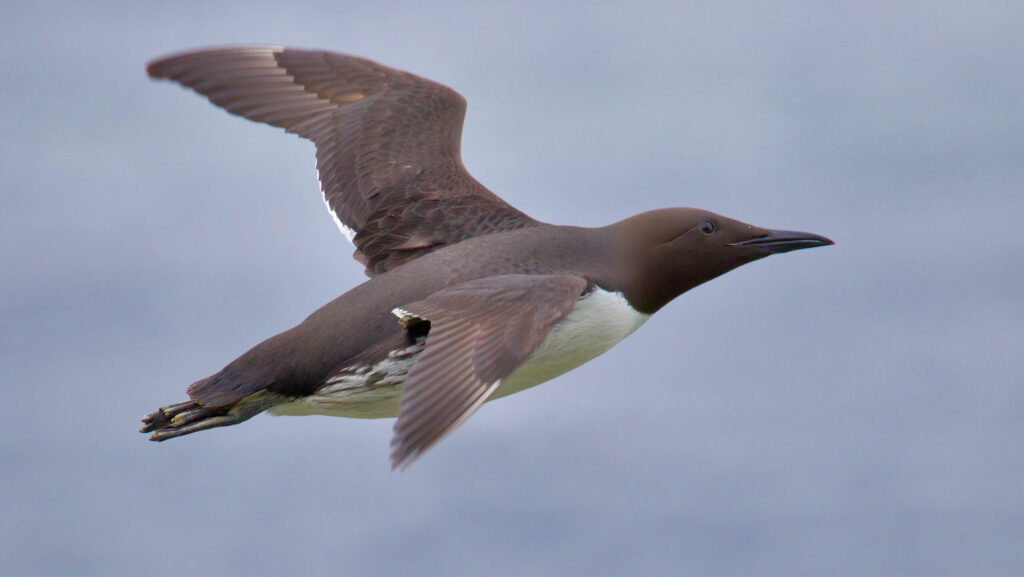
The Common Murre’s molting strategy illuminates the fascinating physical trade-offs between aerial and underwater “flight.” In air, birds benefit from lightweight bodies and large wing surfaces to generate lift, while underwater, denser bodies and smaller propulsive surfaces often prove more efficient. During their flightless period, Murres essentially transform from aerial specialists to aquatic specialists, temporarily optimizing their bodies for marine locomotion. Scientific studies measuring their swimming efficiency show that Murres actually swim more effectively during their flightless period than when fully-feathered for flight. Their temporarily reduced wing area creates less drag underwater, and their adjusted body composition improves diving capabilities. This physical transformation demonstrates how the same body can be reconfigured to excel in dramatically different fluid environments – a remarkable example of biological versatility.
Survival During Vulnerability: Predator Avoidance
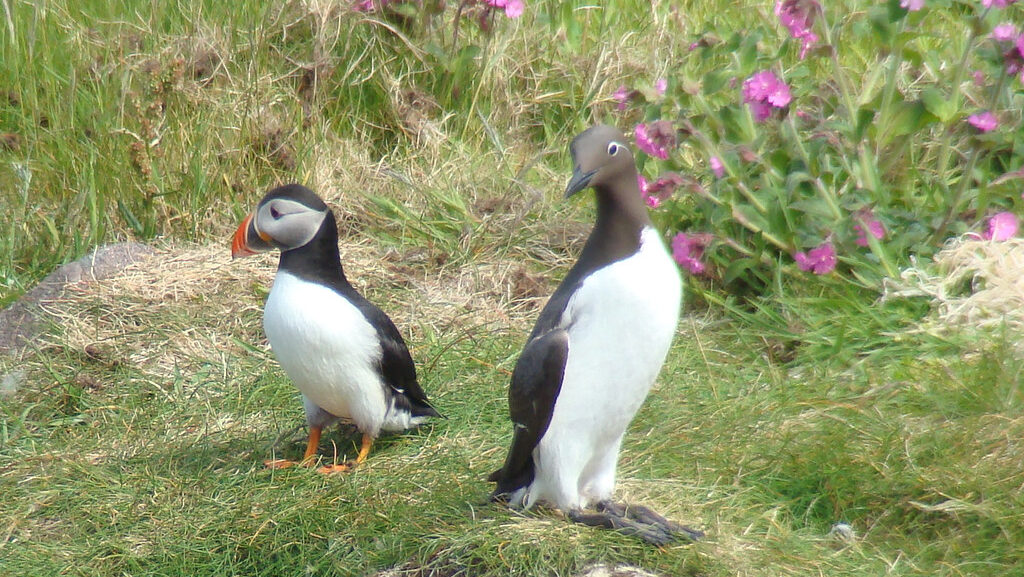
The flightless period represents a time of acute vulnerability for Common Murres, as they lose their primary means of escaping predators. To compensate, these birds employ several behavioral adaptations to reduce predation risk. Murres typically move to offshore waters during their molt, distancing themselves from coastal predators like eagles, falcons, and foxes that frequent their breeding areas. They often gather in loose groupings rather than tight flocks, making it harder for underwater predators like seals or large fish to target them effectively. Research tracking molting Murres has revealed they spend significantly more time diving and less time at the surface where they would be visible to aerial predators. These behavioral compensations, developed over evolutionary time, help mitigate the inherent risks of their extreme molting strategy and demonstrate the sophisticated multi-layered adaptations these birds have evolved.
The Energetic Cost: A Physiological Challenge
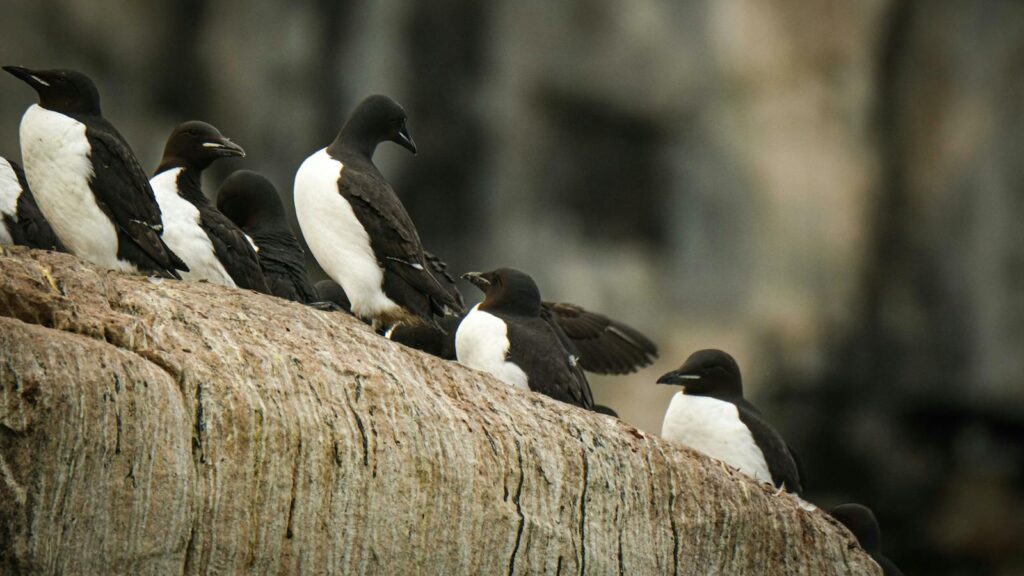
Growing an entirely new set of flight feathers within a compressed timeframe represents an enormous physiological challenge for Common Murres. Feather production requires substantial protein synthesis, minerals (particularly calcium), and energy resources that must be carefully managed during a period when the birds already face increased swimming costs. Researchers studying the physiology of molting Murres have documented metabolic rates up to 40% higher than during normal periods, indicating the substantial energetic investment required. Blood analysis of molting individuals reveals distinctive protein profiles and elevated stress hormones associated with this demanding life phase. Some studies suggest Murres may prepare for this energetically costly period by accumulating specific nutrient reserves before molt begins, similar to how some birds prepare for migration, highlighting how this seemingly simple act of feather replacement actually involves complex physiological preparation and execution.
Climate Change Impacts on Molting Success
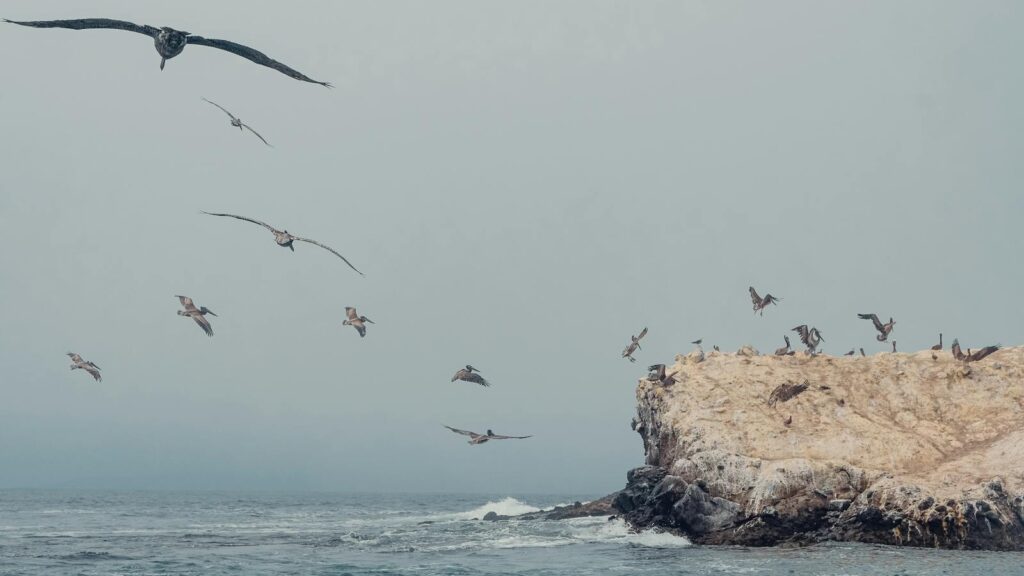
The synchronized and specialized molting strategy of Common Murres makes them particularly vulnerable to climate change disruptions. As ocean temperatures shift and marine food webs reorganize, the carefully timed alignment between molt periods and food availability may become increasingly mismatched. Research monitoring Murre populations across their range has already documented concerning trends, with some colonies experiencing higher mortality during molt periods associated with marine heatwaves or shifts in prey distribution. The birds’ limited mobility during this critical period means they cannot easily relocate if local conditions deteriorate. Climate scientists and conservation biologists now consider the molt period a key vulnerability window that may determine future population trajectories for these seabirds. Some researchers are specifically tracking molting Murres using satellite technology to better understand how climate change may be affecting this critical life history phase.
Comparative Molting: How Other Birds Handle Feather Replacement
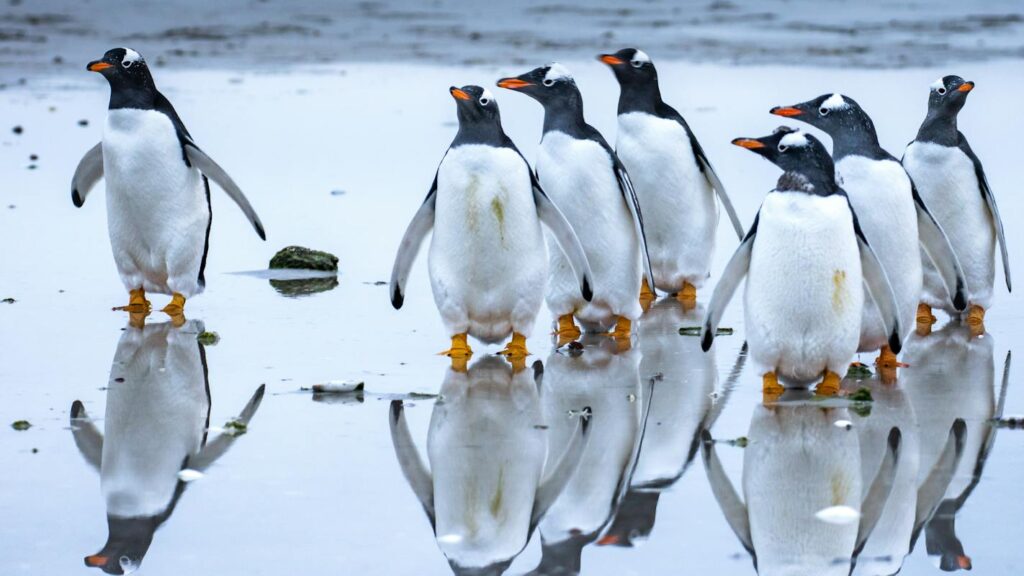
The Common Murre’s simultaneous wing molt strategy stands in stark contrast to the approaches taken by most other bird species. The vast majority of birds, particularly smaller terrestrial species, replace their flight feathers sequentially, maintaining flight capability throughout the process. Larger soaring birds like eagles and vultures may replace feathers in symmetrical pairs to preserve flight balance but rarely risk total flightlessness. Among waterbirds, several groups have independently evolved simultaneous wing molt strategies similar to Murres – including ducks, geese, loons, and grebes – suggesting this approach offers genuine advantages for birds that can retreat to water. The most extreme example may be the flightless penguins, which have abandoned aerial flight entirely but must still periodically replace all their insulating feathers, creating periods of tremendous physiological stress. This diversity of molting strategies across birds demonstrates how this seemingly mundane biological maintenance process has been shaped by each species’ ecological niche and survival requirements.
Research Techniques: How Scientists Study Molting Murres
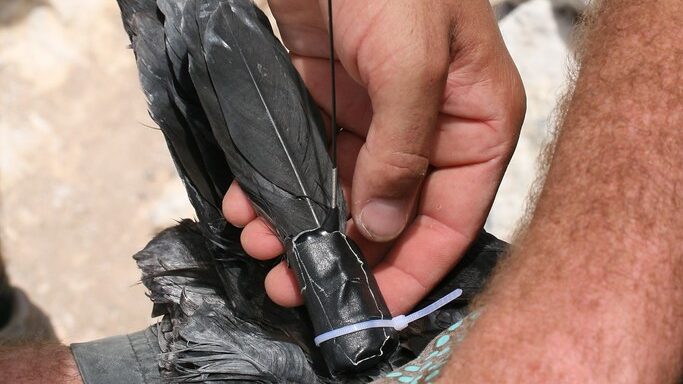
Studying birds during their most vulnerable life phase presents unique challenges that researchers have addressed with increasingly sophisticated techniques. Traditional approaches involved boat-based surveys to locate flightless birds, but these provided only snapshots of molting populations. Modern research employs lightweight geolocator tags attached to breeding birds that record light levels, allowing scientists to determine the timing and location of molt after retrieving the devices the following year. Some studies use stable isotope analysis of feathers to determine where they were grown, providing insights into molting locations even after the fact. The most advanced research now utilizes satellite transmitters and accelerometers that can track birds continuously, measuring their diving behavior, activity patterns, and movements throughout the molt period. These technological innovations have revolutionized our understanding of this previously obscure aspect of Murre biology, revealing the sophisticated strategies these birds employ during their flightless phase.
Conservation Implications: Protecting Vulnerable Molting Grounds
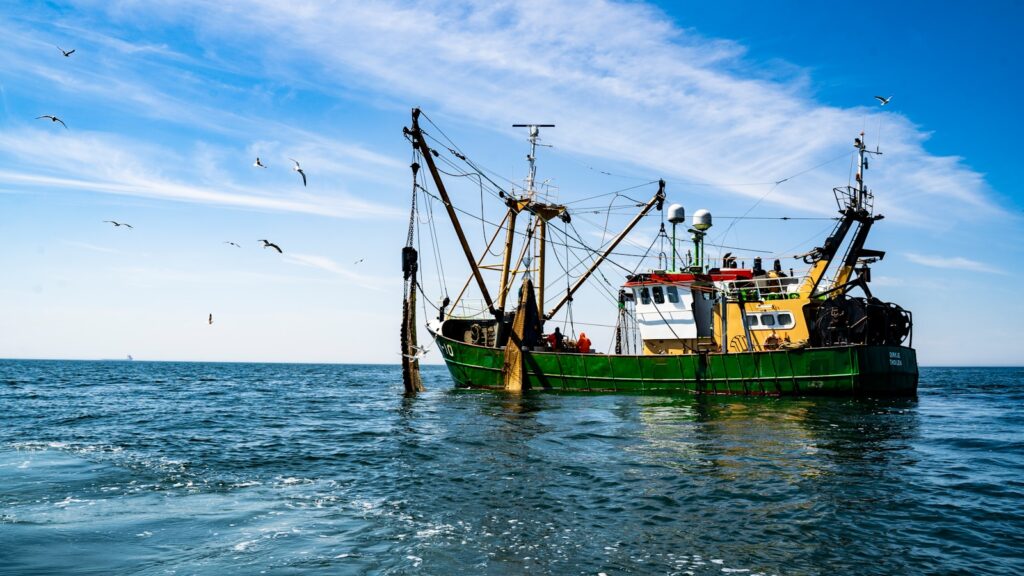
The discovery of specific oceanic regions where Common Murres concentrate during their molting period has important conservation implications. These molting hotspots, often located in productive but specific marine areas, represent previously unrecognized critical habitat for these seabird populations. Conservation organizations are now working to identify and protect these areas from threats like oil development, shipping traffic, and industrial fishing that could prove catastrophic to vulnerable flightless birds. Several marine protected areas in North America and Europe have been expanded specifically to encompass important Murre molting grounds based on tracking data. Conservationists emphasize that protecting breeding colonies alone is insufficient if birds remain vulnerable during other critical life phases. The Common Murre’s distinctive molting strategy thus highlights the importance of full life-cycle conservation approaches that protect species during all their vulnerable periods, not just the most visible breeding season.
Conclusion
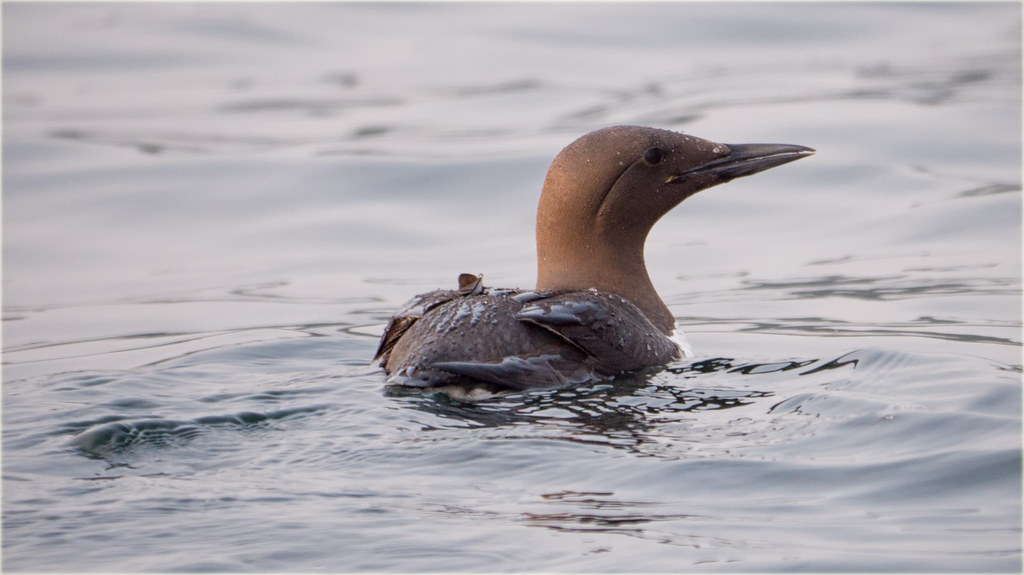
The Common Murre’s remarkable strategy of dropping all its flight feathers simultaneously represents one of nature’s most fascinating adaptations. This approach – temporarily sacrificing flight to optimize underwater performance and compress the molting timeframe – showcases the incredible diversity of solutions that evolution can produce. As scientists continue to study this phenomenon using advanced tracking and physiological techniques, we gain deeper insights into the complex trade-offs that shape animal life histories. For the Common Murre, the brief but dramatic weight loss from shedding feathers represents not merely a biological maintenance process but a sophisticated survival strategy finely tuned to the challenging interface between aerial and marine environments. In an era of rapid environmental change, understanding such specialized adaptations becomes increasingly important for protecting these remarkable birds and the marine ecosystems they inhabit.
